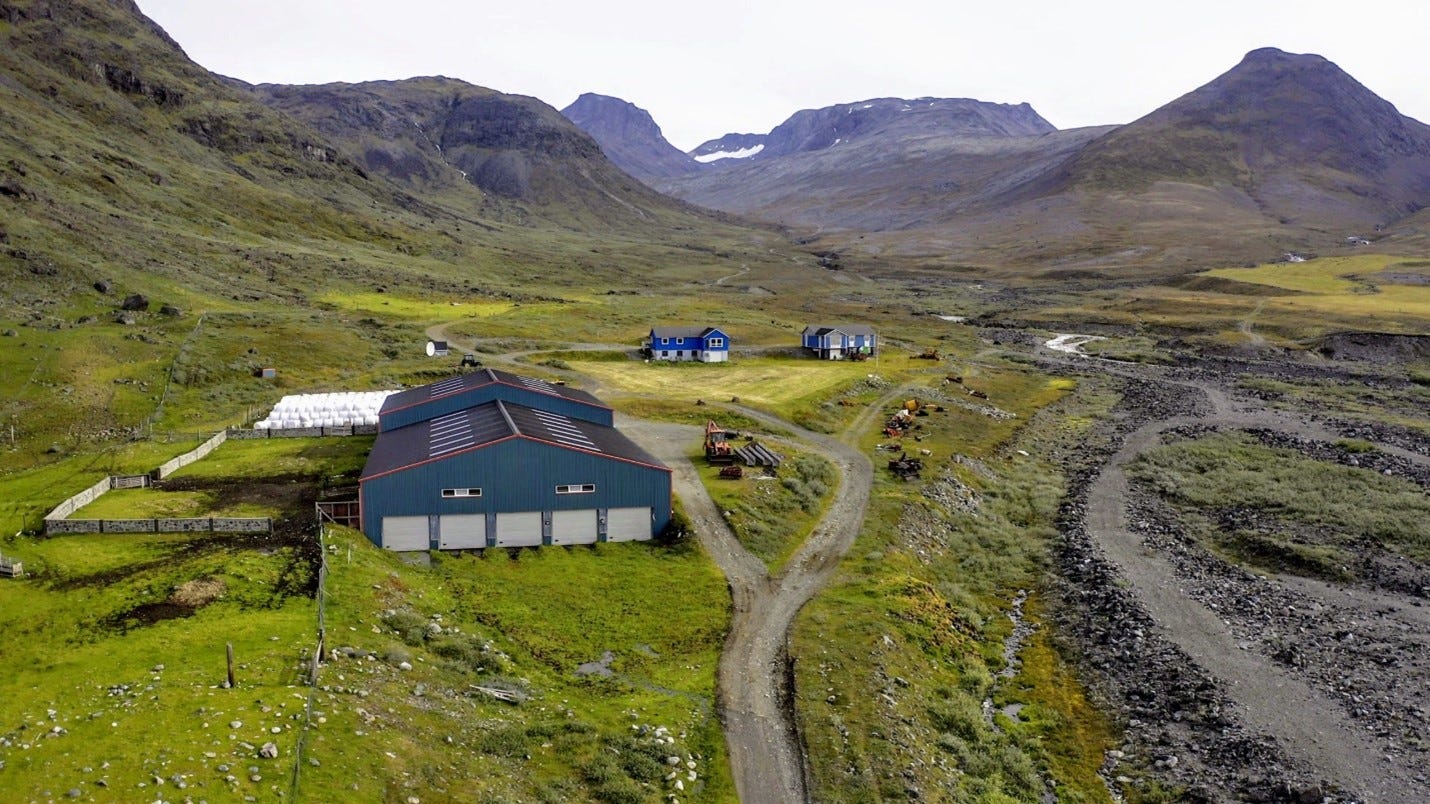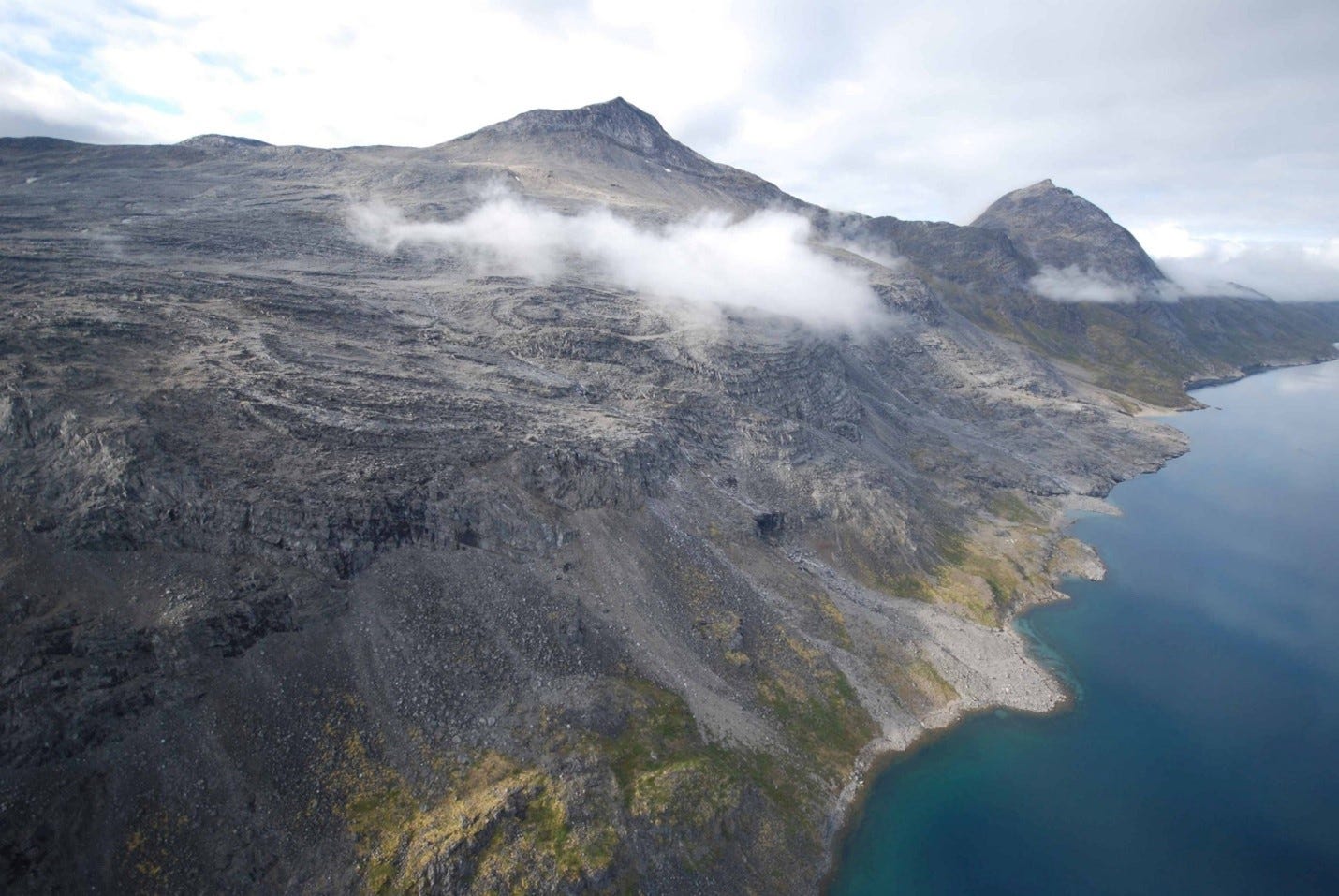President Trump, Greenland, Australia, and the mining of rare earths
Connections between global governance, global systems, place, and climate change
[Two posts for the price of one today…. there may be a slight gap in them for the next 2 to 3 weeks.
Former President Trump is in the news quite a lot at the moment. So, he has prompted me to post this article I wrote 18 months or so ago.]
In August 2019, President Trump announced to the world that he would like the United States to buy Greenland. His plans were quickly dismissed scathingly by various politicians in Denmark, as Greenland is an autonomous Danish territory. The former Danish Prime Minister, Lars Rasmussen, tweeted ‘It must be an April Fool’s Day joke…but totally out of season’. Greenland’s Premier at the time, Kim Kielsen, stated ‘Greenland is not for sale’. On the other hand, the Wall Street Journal reported that Mr Trump had spoken about the purchase with ‘varying degrees of seriousness’. What lay behind the President’s curious and inflammatory statement?
[Greenland was granted home rule by Denmark in 1979, with more power transferred in 2008. It now has responsibility for policing, the judicial system, border controls, financial regulation and mineral resource mining. The Danish government retains control of monetary policy and foreign affairs, including defence.]
The Australian connection
A few weeks before President Trump’s announcement, he was visited at the White House by Greg Barnes, an Australian geologist. The Barnes Family Trust are 100% owners of the Australian mining company Rimbal, which has been involved in the mining of gold, silver, coal, platinum, and rare earths in several places across the globe. In 2010, Rimbal had set up a subsidiary Tanbreez which made an application to mine a range of rare earths (including dysprosium, zirconium, and tantalum) and uranium, in southern Greenland in 2012.
Tanbreez highlighted the proposed mining site, Kvanefjeld near Narsaq (Photo 1), adjoined a natural, mostly ice-free harbour capable of taking large ships (Figure 1). There was also an international airfield at Narsarsuaq, just 40km away. They stated that their project to mine would have a ‘minimal impact on the local environment’.
Tanbreez has subsequently sold the ownership rights to Kvanefjeld to another Australian company (though backed by Chinese finance) called Greenland Minerals. Tanbreez (still owned by the Barnes Family Trust) has now invested in another site, Kringlerne, just 8km south of Kvanefjeld (Photo 2). The key difference between the two sites is that Kringlerne does not contain uranium, whereas Kvanefjeld does.
Rare Earth Elements (REEs).
REEs are a group of chemically similar, metallic elements largely contained within the lanthanide group of the periodic table (numbers 51–71). Although they occur in many locations, they are usually found in minute quantities and are difficult to extract. Places where they are concentrated enough to be considered worth mining are few – hence, they are known as ‘rare’. Global production is over 200,000 tonnes pa. China currently contains over 50% of the world’s reserves of REEs and supplies over 80% of current global production.
As technology has advanced, REEs have become increasingly important. They have a huge range of uses – found in smartphones, tablets, and flat screen TVs. They are also vital to ‘green’ technology such as wind turbines, solar panels, hybrid vehicles, LED lighting and rechargeable batteries. They are used in satellite communications, medical imaging in hospitals and in fibre-optic cables.
REEs are at the centre of a 21st century power struggle. China, which effectively controls global production of REEs, has been accused of resource nationalism by its critics, by threatening to potentially ‘starve’ Japan, the EU and the USA of their supplies. These countries have expressed concerns to the World Trade Organisation that Chinese export restrictions are an attempt to conserve supplies for its own high-tech, green, and military industries. High-tech, high-end manufacturing is at the core of China’s latest economic development plan. Their energy security depends on greater use of renewable energy sources, such as wind turbines, and their increased military power assets are a key part of China’s global political strategy. China’s dominance in this field has caused new areas of exploration to appear around the world, including Greenland.
[Resource nationalism is when governments assert strict control over natural resources located in their territory. Resource nationalism conflicts with the economic interests of multinational corporations.]
Figure 1. The location of the proposed mine at Kvanefjeld, Greenland
Greenland and climate change
Greenland is the world’s largest island, having an area of 2.2 million km2. Around 80% of its area is covered by an ice sheet (1.7 million km2), with smaller ice caps and glaciers at its margins. The maximum thickness of the ice sheet is around 3.4 km. Since 2005, the Greenland ice sheet has lost mass at a rate of over 210 gigatonnes per year. In July 2012, for the first time since records began, the entire surface of the Greenland ice sheet experienced surface melt. Most of the ice sheet lies on bedrock above sea level, and outlet glaciers extend down to the coast transferring mass (snow, ice, water, and debris) from the interior of the ice sheet towards the margins.
The impacts of climate change on the Arctic region are most obvious at the margins of the Greenland icesheets, which are highly sensitive to changes in air temperature, ocean-water temperature, and sea level. Although there has been an increase in winter snow accumulation at high elevations, glacial melt and glacier flow velocity at the ice-sheet margins have increased. Several glaciers have become unstable at their termini, ‘calving’ icebergs that break off and drift to the open ocean. Jakobshavn Isbræ is the most active glacier in Greenland, producing up to 50 km3 of icebergs per year.
Resource exploitation
One of the major implications of climate change in the Arctic is the greater opportunity for resource exploitation. Geologists estimate that Greenland may contain up to 50% of the world’s rare earth minerals, as well as reserves of metals such as gold and zinc. As noted earlier, companies from across the world are seeking licenses to extract Greenland’s raw materials, including oil and natural gas, from areas that have been exposed by the retreating ice. Although these activities may bring great economic benefits, there will also be environmental and social costs. A key challenge for Greenland, and the wider Arctic region, is to develop strategies to sustainably manage these developments.
The political dimension
In April 2021, a general election took place in Greenland, and a new coalition government came to power. The new government were elected with a focus to promote Greenland as environmentally responsible. In November that year, Greenland’s parliament passed a bill to ban uranium mining and exploration, effectively blocking the development of the Kvanefjeld rare earths project (see earlier). The project was being developed by the Australian company Greenland Minerals. It had been granted preliminary approval in 2020 and was hoping to gain final endorsement by the previous government.
The decision to ban uranium mining and exploration follows a campaign promise from the newly elected government, which had publicly stated its intention to block Kvanefjeld’s development, due to the presence of the radioactive metal as a by-product. It banned exploration of deposits with a uranium concentration higher than 100 parts per million (ppm). New regulations also include the option of prohibiting exploration of other radioactive minerals, such as thorium.
Conclusion
The large autonomous country of Greenland looks as if it is turning its back on, or at least reducing the scope of, its mining activities. It currently has only two mines: one for anorthosite and titanium, and the other for rubies and pink sapphires. Before the April 2021 general election, the country had issued several exploration and mining licences in a bid to diversify its economy and eventually realise its long-term goal of independence from Denmark.
Unlike that of President Trump, the US government under President Biden has extended an economic aid package to Greenland to ensure the supply of critical rare earth minerals in the future, to counteract the dominance of China. Perhaps this more subtle approach will have a more successful outcome (for the US) than that taken by his predecessor?
Photo 1: Narsaq valley
Photo 2: Kringlerne rare earth site






